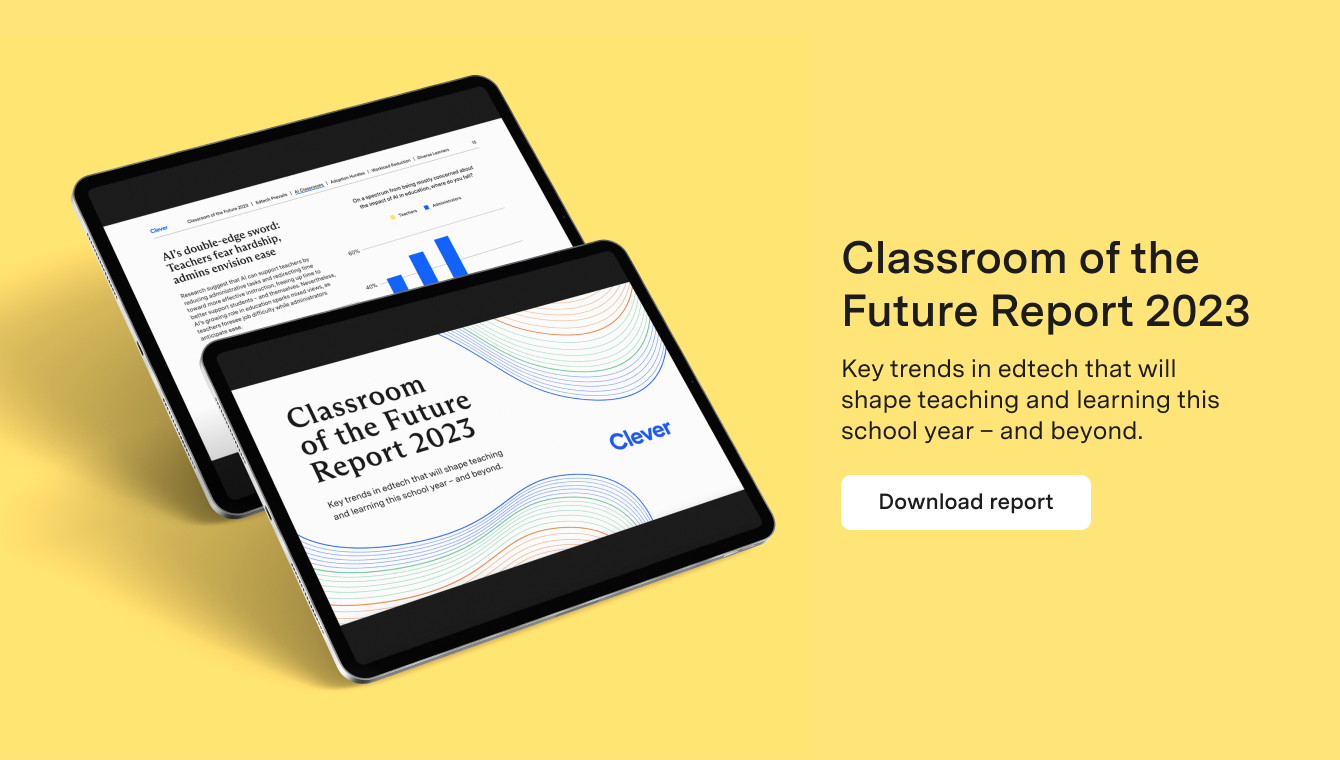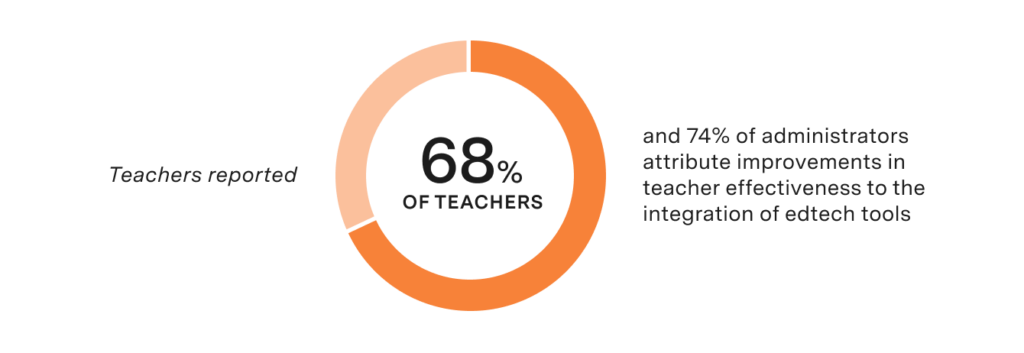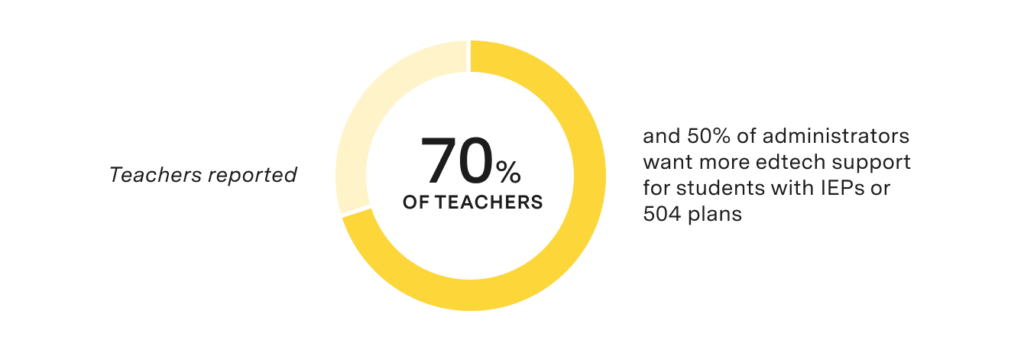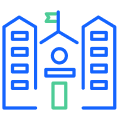5 Trends shaping the future of K-12 learning
In a new survey, educators and administrators provide insights on the major shifts happening in classrooms right now.
In the rapidly evolving landscape of education, technology has become an indispensable tool for both students and educators. Edtech companies offer these tools, but educators are the ones truly shaping the modern classroom. And at the end of the day, educators, administrators, edtech companies—are all driven by the same question: How can more students be connected to a world of learning?
To find out, we conducted a survey of 1,500 educators, administrators, and edtech companies, focusing on topics like artificial intelligence (AI) and the impact of edtech on student learning. The survey results highlight edtech’s role in relieving educator workloads and the growing need for personalized learning support.
In this article, we explore two key trends shaping the future of classrooms. Uncover all five critical insights by downloading the full report: Classroom of the Future Report 2023

Key trend #1: Edtech relieves workload from teachers
Amidst the demands of modern education, edtech emerges as a tool to support educators.

As part of this evolution, several prominent edtech partners are spearheading efforts to streamline workflows for educators.
For instance, Canva simplifies the creation of visually engaging classroom materials, saving valuable time for busy educators. BrainPOP provides animated curricula resources that reduce lesson planning efforts while making complex concepts more accessible. And IXL stands out for its adaptive approach – by catering to each student’s strengths and weaknesses, they enable teachers to deliver more targeted instruction.
Key trend #2: Personalized edtech supports diverse learners
The survey brought to light a key need: more personalized support for diverse learners.

Among educators, 70% expressed a need for more edtech tools that cater to students with Individualized Education Programs (IEPs) or 504 plans. Administrators also acknowledged this need, with 50% recognizing the requirement for enhanced edtech support for these students.
This demand prompts an incredible opportunity for edtech to play in creating an inclusive educational environment. By offering tools that adapt to various learning styles and requirements, edtech companies can empower educators to meet the needs of every student, ensuring equitable access to quality education.
What’s next? Embrace the K-12 revolution
With the Classrooms of the Future Report, our mission is to amplify K-12 educators’ voices and provide insights to decision-makers for better student support. With the rise of AI, tackling pandemic-induced learning loss with personalized learning, and a steadfast commitment to technology, we lead an educational revolution. It’s time to embrace this paradigm shift and pave the way for a brighter future in education.
For visionaries and changemakers—seize the moment. These trends are already shaping K-12 learning today. By equipping our educators with cutting-edge edtech tools, we free them from unnecessary burdens. Let’s forge an educational landscape where equity thrives.
“Edtech is here to stay, and the rise of AI will have an inevitable impact on the future of teaching and learning. As we look ahead, edtech that addresses the needs of all students, while also helping teachers navigate evolving classrooms, will have the most impact.”
—Trish Sparks, CEO of Clever


More to read
December 10, 2025
Wonde vs. Clever: 2025 Side-by-Side ComparisonWhen it comes to choosing the right edtech platform for your school or trust, there’s a lot to consider. Can it sync reliably with your Management Information System (MIS)? Support secure logins for every user, on every device? Scale across multiple schools without overloading your IT team? Wonde and Clever are two of the most […]

October 21, 2025
Stop the Sticky Notes: Bend-La Pine’s Simple, Secure Fix for Substitute Teacher AccessRobbie Faith, an instructional technology coach at Bend-La Pine Schools, successfully implemented a Clever feature to streamline secure access to digital resources for short-term substitutes, leading to more effective sub planning for teachers, increased confidence for subs, and more consistent learning for students.

October 17, 2025
Cracking the K-12 Code: Where Corporations StumbleYou’ve built a successful company. You know how to scale into new markets. The K-12 market looks like a natural extension, and many companies hit a wall because the playbook is not the same. The biggest challenge isn’t a lack of opportunity; it’s the gap between how enterprises do business and the very specific demands […]


















